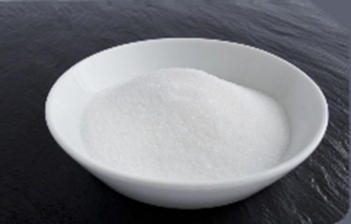Main Benefits of STPP in Ceramic Production
- Improves slurry fluidity and uniformity — ideal for slip casting and mold filling.
- Reduces water requirement and drying time, lowering energy usage and shrinkage risks.
- Enhances clay body strength and plasticity, beneficial for shaping and molding.
- Improves glaze rheology — smoother glaze flow, fewer defects (blisters, pinholes), better surface finish.
- Promotes better sintering, densification and final product strength under controlled firing.
1. How STPP Works in Ceramic Slurry & Clay Body Preparation
In ceramic production, raw materials like clay, feldspar, or kaolin are mixed with water to form a slurry. Normally, clay particles tend to flocculate — cluster together — trapping free water and increasing viscosity, making the slurry difficult to handle.
When STPP is added, it functions as a dispersant / deflocculant: its negatively charged ions adsorb onto clay particle surfaces, increasing surface charge (zeta potential) and promoting electrostatic repulsion between particles. The result: particles are dispersed evenly, free water is released, and slurry fluidity improves dramatically.
- Lower viscosity & better flow — ideal for slip casting, molding, and glazing processes.
- Enables higher solid content — lower water ratio reduces drying shrinkage, energy use, and risk of cracks/warping.
- Improves green body plasticity — easier shaping and molding, especially for complex or large ceramic items.
2. Recommended Usage & Dosage Guidance (Illustrative)
The exact STPP dosage depends on raw material composition, slurry solid content, and desired viscosity. The chart below gives typical reference dosage ranges for different ceramic processes:
* Note: these ranges are illustrative and should be validated through lab-scale trials. Adjust according to raw material properties, local standards, and desired final product performance.
3. Practical Tips for Using STPP in Ceramic Production
- Use a high-quality ceramic-grade STPP powder — purity, particle size, and water-insoluble content significantly affect performance.
- Ensure STPP is fully dissolved before adding clay or glaze raw materials — pre-dissolve in water, stir until clear.
- Gradually add STPP solution to the slurry under agitation to avoid local over-concentration and inhomogeneity.
- Monitor slurry rheology (viscosity, flow behavior) after STPP addition — adjust dosage if slurry becomes too thin or too dense.
- Document batch formulas and firing parameters — changes in STPP content may require adjustments in drying and sintering schedules.
4. Common Ceramic Applications of STPP
Thanks to its versatile functions, STPP is widely used in various ceramic production sectors, including:
- Tile & building ceramics: for slip casting or spray-drying tile bodies, improving workability and reducing waste.
- Sanitaryware & tableware: ensuring smooth slurry flow, even wall thickness, and defect-free glaze surfaces.
- Porcelain & decorative ceramics: enabling fine detail molding, stable glazing, and high finish quality.
- Technical ceramics: aiding in uniform particle dispersion for ceramic substrates, refractories, and dense ceramic parts requiring controlled microstructure.
5. What to Watch Out For — Safety & Quality Control
- Ensure use of ceramic-grade STPP — industrial impurities or residual moisture may affect slurry stability or final product quality.
- Avoid overdosing — excessive STPP can lead to overly fluid slurry, poor shape retention, or defects during drying and firing.
- Store STPP powder properly — keep in dry, ventilated conditions, avoid moisture uptake.
- Test final product properties (density, strength, porosity, glaze adhesion) after any change in formulation or firing schedule.
6. Summary — Why STPP Matters in Modern Ceramic Manufacturing
By acting as a dispersant, deflocculant, plasticizer, and rheology modifier, STPP helps manufacturers achieve smoother, more efficient ceramic production — with better slurry handling, reduced water/energy usage, improved strength and finish, and more consistent final products. As ceramic manufacturing demands higher precision and quality, STPP provides a flexible, cost-effective tool to meet these challenges.
FAQ — STPP for Ceramics
Q: Is STPP safe for ceramic production and final ceramic products?
A: Yes. When using certified ceramic-grade STPP and following recommended dosage and processing conditions, STPP contributes to improved slurry quality, does not remain as harmful residue in fired ceramics, and helps achieve stable, defect-free products.
Q: Can STPP reduce water usage and energy costs in ceramic production?
A: Yes. By dispersing ceramic particles and improving slurry solid content, STPP lowers the required water volume, enabling faster drying and reducing energy consumption. This also reduces shrinkage and deformation risks.
Q: Should I adjust firing temperature when using STPP?
A: Possibly. Because STPP can act as a flux and influence sintering behavior, it’s recommended to run small-scale tests to fine-tune drying and firing schedules when introducing STPP into existing formulations.
Q: What types of ceramic products benefit most from STPP usage?
A: Slip-cast tiles, sanitaryware, porcelain, decorative ceramics, and technical ceramics all benefit — especially when homogeneity, surface quality, dimensional stability, and high production efficiency are required.

